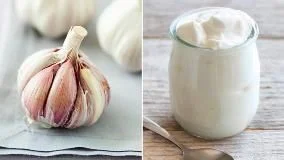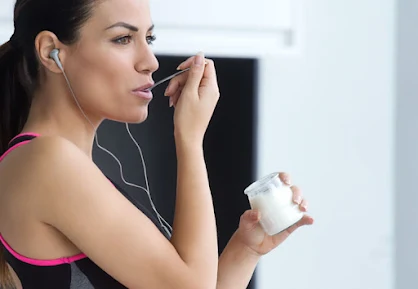12 Ways to Treat Yeast Infections at Home Fast Naturally
Types of yeast infections
There are different types of yeast infections, but all happen when an area of the body becomes infected with yeast-like fungi called candida (about yeast infections). This fungus thrives in moist, warm, folded areas of the skin, such as the groin, under the breast, or the armpits. “Candidiasis is the primary type of fungal infection in the body: It is caused by yeast and can occur in the mouth, gut, throat, and vagina,” explains Niket Sonpal, MD, an internist and gastroenterologist in New York. “If it is not treated correctly with medication, it is likely it can grow out of control and infect your kidneys and heart.”
There are many different types of infections caused by the candida fungus, depending on the location of the body it happens and the type of candida that is present. While they do have some overlap in symptoms, they can also have different symptoms. The most common candida infections are:
Cutaneous Candidiasis happens when the skin on the body is infected. The most typical places the candida will grow are skin between the fingers or toes, nails, armpits, under the breasts, or around the groin. The main symptom is a red, itchy rash.
Diaper rash in babies can sometimes be caused by a candida overgrowth, which happens when there is a moist environment from wet diapers helping candida to thrive. A red rash appears between the creases of the skin and small red dots represent the infected area.
Oral thrush happens when candidiasis affects the lining of the mouth or throat. Oral thrush presents as white lesions on the insides of the cheeks or on the tongue. Symptoms may also include bad breath, pain while swallowing, abnormalities in taste, and dryness of the mouth.
“Yeast infections are common and happen in three out of four women at least once in their life,” says Dr. Sonpal. Because vaginal yeast infections happen to most women, this article will be specific to the treatment and prevention of vaginal yeast infections only.
Can a yeast infection go away on its own?
“Mild versions of yeast infections have the chance of going away on their own,” explains Dr. Sonpal. “However, it is not recommended to ignore a yeast infection because it is most likely to return if not medically treated.”
While some individuals may choose to try home remedies for yeast infection or over-the-counter treatments, there are certain people who should visit the doctor when they have symptoms of a yeast infection. These patients include:
Those who have recurring yeast infections (four or more times in a year)
Pregnant women
Those who were possibly exposed to a sexually transmitted disease (STD)
Women who are unsure if their symptoms are from a yeast infection
Individuals who do not have success with home remedies or over-the-counter medicines
Patients with uncontrolled diabetes or a weakened immune system due to certain medications or conditions such as HIV.
12 Ways to Treat Yeast Infections at Home Fast Naturally
There are natural ways to treat yeast infections. These home remedies for yeast infections are convenient for those wanting to go a more natural, discreet route.
Apple cider vinegar has been found to inhibit the growth of candida albicans, the strain of fungi that typically causes yeast infections.
To use this natural remedy, run a bath and add a half cup of apple cider vinegar and soak in the bath for at least 20 minutes.
Never use apple cider vinegar at full strength. Because of apple cider’s ability to kill bacteria and fungi, it could also kill the healthy bacteria in the body. Dilute apple cider vinegar before using it. (How to Make Natural Apple Cider Vinegar)
2. Boric acid
Boric acid vaginal suppositories remedy yeast infections because of boric acid’s antiseptic properties. While research supports the use of these suppositories, it concludes that they should only be used for recurrent and hard-to-treat yeast infections. Because boric acid is so potent, milder treatments should first be used.
3. Coconut oil
Coconut oil, drawn from the flesh of coconuts, has naturally occurring antifungal properties. A Scientifica study found coconut oil can help inhibit the candida bacteria that causes yeast infections. To utilize this treatment, simply apply coconut oil to the affected area.
ALSO READ: 9 Coconut Oil Health Benefits
4. Cranberry juice or pills
Cranberry juice has been found to help with urinary tract infections by preventing the formation of the candida Albicans (the fungus that causes yeast infections). While studies have not shown its ability to help cure Candida Albicans in the vagina, some women claim to have results. Cranberry juice and pills are also very high in vitamin C, which can also help prevent infection.
READ ALSO: The Health Benefits of Cranberry Juice
5. Douching
Over-the-counter douches may combat yeast infections and relieve inflammation and irritation. However, most studies show adverse effects of douching, and few studies give positive outcomes. According to the Office of Women’s Health, doctors recommend that women do not douche because douching can lead to problems getting pregnant, vaginal infections, and sexually transmitted infections (STIs).
6. Garlic
Garlic and garlic oil are well-known antifungal agents. Studies have even found it to have antifungal activity against candida albicans. While more traditional approaches may recommend inserting the garlic clove directly into the vagina, a less invasive approach is to simply add more fresh garlic to food and incorporate it into more meals.
7. Hydrogen peroxide
Hydrogen peroxide is a strong antiseptic that has been found to kill yeast. It has not been studied specifically on vaginal infection strains of yeast. Before applying to the vagina, be sure to dilute the hydrogen peroxide first. (How To Use Hydrogen Peroxide For Nail Fungus - Step By Step Guide)
8. Oregano oil
Oregano oil, or origanum oil, has been shown to inhibit the growth of candida Albicans. To use oregano oil, use a couple of drops in a carrier agent, like coconut oil or olive oil, and apply to the affected area. (The 7 Health Benefits of Oregano)
9. Probiotics
Probiotics contain live bacteria, such as the bacteria Lactobacillus acidophilus, which helps foster a healthy balance of bacteria in the vagina. They may treat or prevent bacterial vaginosis and urinary tract infections in addition to yeast infections.
Buy probiotic supplements online or in stores. These oral supplements may take up to 10 days to show results. To decrease the length of time for results, some women have used probiotics as vaginal suppositories. Eating yogurt (with live and active cultures) is another good way to increase probiotic intake.
However, like many natural remedies, there is a lack of evidence that probiotics cure yeast infections.
10. Tea tree oil
Tea tree oil is an essential oil with antifungal properties, that some people claim to cure yeast infections. It works by killing the cell walls and membranes of the yeast. While more studies are currently needed, a 2015 study found that vaginal suppositories containing tea tree oil were able to work as a fungicidal agent thereby killing the candida albicans.
As with all essential oils, use a few drops of tea tree oil with a carrier oil when using it on the body. Women can purchase vaginal suppositories with tea tree oil online.
11. Vitamin C
Vitamin C boosts the body’s immunity and, with a strengthened immune system, the body is able to fight off a yeast infection better. Add more vitamin C by taking a supplement or eating vitamin C-rich fruits and vegetables like oranges and broccoli.
12. Yogurt
Yogurt (with live and active cultures) is a good way to treat yeast infections because of its high probiotic concentration. As mentioned above, probiotics can help fight off candida Albicans. A recent study found that the ingestion of yogurt containing probiotics with Lactobacillus acidophilus helps suppress the growth of yeast. While eating yogurt with probiotics can improve yeast infections, some women even find relief in soaking a tampon in yogurt and inserting it vaginally, remembering to change it frequently. With this technique only use plain, unsweetened yogurt or unsweetened Greek yogurt. Yogurt containing sugar would help the candida grow and flourish.
How to prevent yeast infections
There are a number of ways to prevent a yeast infection.
- Avoid unnecessary antibiotic use. Antibiotics can kill off the healthy bacteria in the vagina, causing an overgrowth of yeast, thus leading to a yeast infection.
- Wear cotton underwear. Loose-fitting, cotton underwear is most conducive to a healthy microbiome.
- Avoid garments that are tight and aren’t as breathable, such as leggings. These clothes can create a humid, damp area, which is the ideal environment for candida overgrowth. Because of this, it is also important to change out of damp or sweaty clothes, like workout clothes or swimwear, quickly.
- Avoid hot tubs and scalding hot baths, which foster candida growth, due to the warm, moist environments.
- Take probiotics or eat yogurt with probiotics since they help balance the vaginal microflora. As well as treatment for yeast infections, probiotics are helpful in the prevention of yeast infections. The best probiotics to take will be those containing the Lactobacillus rhamnosus GR-1 bacteria .
- Avoid behaviors that may lead to yeast infections, such as poor hygiene. When performing personal hygiene practices, avoid douching, scented vaginal washes or scented lotions, as well as perfumed sanitary products near the genitals, which can throw off the balance of the vagina’s microflora.
- Avoid sugary and processed foods. Yeast grows from sugar, so this can cause a surplus of yeast growth.
Causes of recurring yeast infections
Some women are more susceptible to yeast infections than others and will have recurring yeast infections or chronic yeast infections. There are a few possible reasons someone may deal with recurrent yeast infections:
Sexual activity. While yeast infections are not sexually transmitted infections (STI), it is possible for partners to pass the candida to each other. To prevent this, use condoms or dental dams and practice good hygiene after sexual intercourse, such as showering. Avoid having intercourse when one partner has a yeast infection.
The original yeast infection was not completely treated or the yeast infection is caused by a drug-resistant strain. Symptoms may disappear before the infection is fully treated. When this happens, the yeast infection will come back. There are also strains of yeast that are more drug-resistant, which makes it harder to get rid of than others.




.jpg)







.jpeg)
